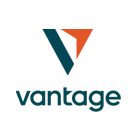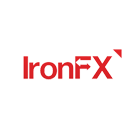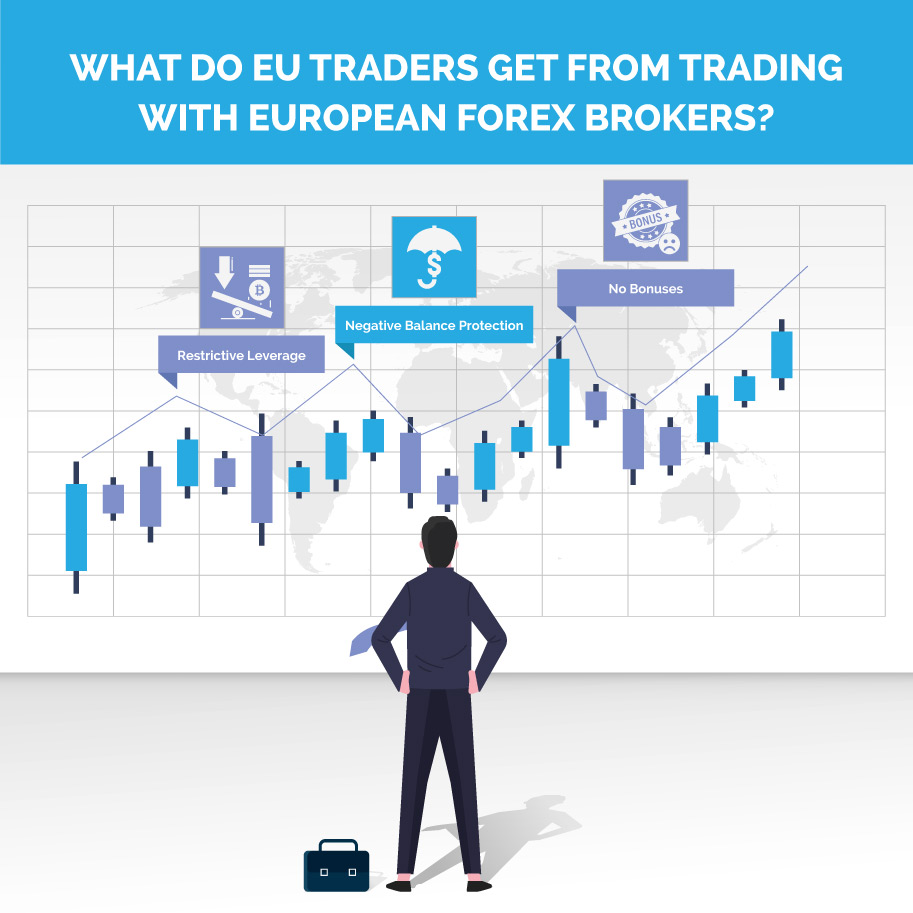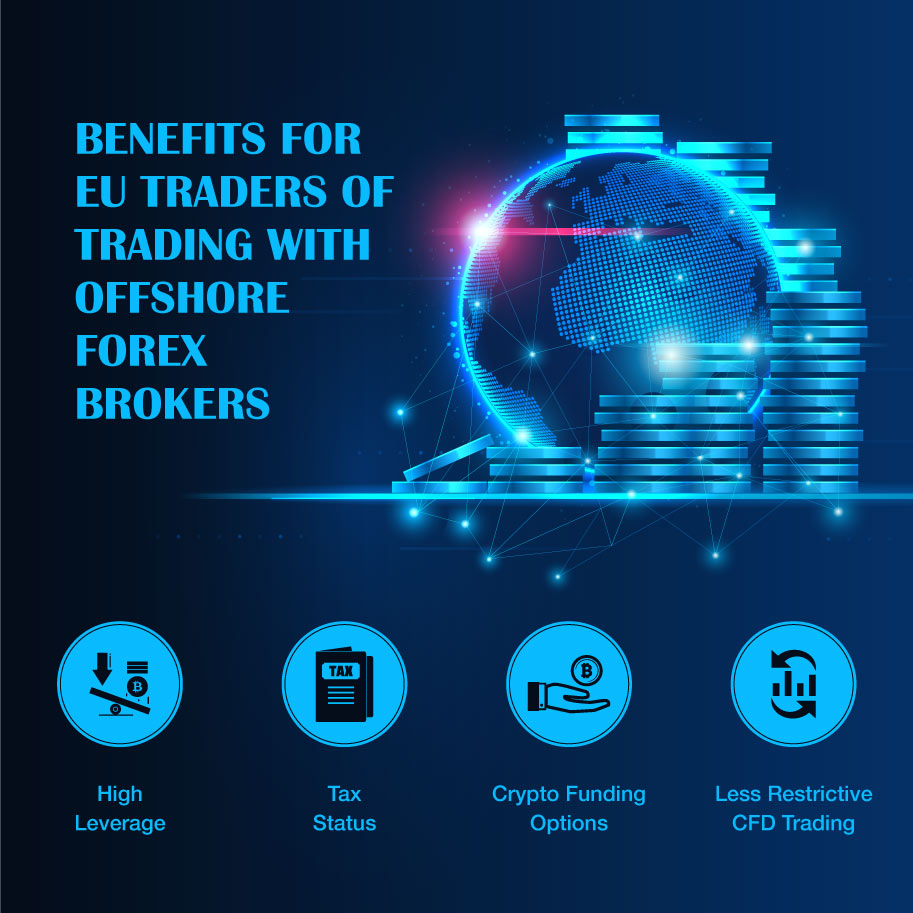Below you will find a list of Forex Brokers accepting clients from European countries and offering them the opportunity to open a trading account with easy-going trading conditions surpassing the tight ones provided by most mediocre FX companies located and regulated in the EU/EEA. To make it work, some part of brokers operates not only in Europe, but also outside of it. While the other part prefers to operate solely in offshore zones. That's exactly the reason why certain brokers can offer leverage much higher than 1:30 and stop-out levels equal or lower than 50%. Despite being unregulated or authorized by a less-strict government agency, it's way more easier to work with these kind of brokerages. For the record, if you do not feel safe trading with an offshore entity, then choose a South African or New Zealand one. The regulatory environment is not so tough, but still reliable, and trading conditions are still less jammed than in the EU.

 RoboForex (2009)
Leverage: up to 1:2000
Deposit: from 10 USD
Spreads:
RoboForex (2009)
Leverage: up to 1:2000
Deposit: from 10 USD
Spreads: 


















 TradeView (2004)
Leverage: up to 1:400
Deposit: from 100 USD
Spreads:
TradeView (2004)
Leverage: up to 1:400
Deposit: from 100 USD
Spreads: 












 Anzo Capital (2015)
Leverage: up to 1:1000
Deposit: from 100 USD
Spreads:
Anzo Capital (2015)
Leverage: up to 1:1000
Deposit: from 100 USD
Spreads: 


 PF Derivatives (1999)
Leverage: up to 1:300
Deposit: from 5 USD
Spreads:
PF Derivatives (1999)
Leverage: up to 1:300
Deposit: from 5 USD
Spreads: 









 Dukascopy (1998)
Leverage: up to 1:200
Deposit: from 100 USD
Spreads:
Dukascopy (1998)
Leverage: up to 1:200
Deposit: from 100 USD
Spreads: 

 XTB Group (2004)
Leverage: up to 1:200
Deposit: from 250 USD
Spreads:
XTB Group (2004)
Leverage: up to 1:200
Deposit: from 250 USD
Spreads: 






 Global Prime (2010)
Leverage: up to 1:100
Deposit: from 200 AUD
Spreads:
Global Prime (2010)
Leverage: up to 1:100
Deposit: from 200 AUD
Spreads: 










 Key To Markets (2010)
Leverage: up to 1:500
Deposit: from 100 USD
Spreads:
Key To Markets (2010)
Leverage: up to 1:500
Deposit: from 100 USD
Spreads: 




 Fibo Group (1998)
Leverage: up to 1:3000
Deposit: from 1 USD
Spreads:
Fibo Group (1998)
Leverage: up to 1:3000
Deposit: from 1 USD
Spreads: 








 GKFX (2010)
Leverage: up to 1:1000
Deposit: from 50 USD
Spreads:
GKFX (2010)
Leverage: up to 1:1000
Deposit: from 50 USD
Spreads: 




 NAGA (2015)
Leverage: up to 1:500
Deposit: from 50 USD
Spreads:
NAGA (2015)
Leverage: up to 1:500
Deposit: from 50 USD
Spreads: 












 EightCap (2009)
Leverage: up to 1:500
Deposit: from 100 USD
Spreads:
EightCap (2009)
Leverage: up to 1:500
Deposit: from 100 USD
Spreads: 










 BCR (2008)
Leverage: up to 1:400
Deposit: from 300 USD
Spreads:
BCR (2008)
Leverage: up to 1:400
Deposit: from 300 USD
Spreads: 






 INGOT Brokers (2006)
Leverage: up to 1:3000
Deposit: from 10 USD
Spreads:
INGOT Brokers (2006)
Leverage: up to 1:3000
Deposit: from 10 USD
Spreads: 



 Pepperstone (2010)
Leverage: up to 1:200
Deposit: from 200 AUD
Spreads:
Pepperstone (2010)
Leverage: up to 1:200
Deposit: from 200 AUD
Spreads: 









 Infinox (2009)
Leverage: up to 1:1000
Deposit: from 50 USD
Spreads:
Infinox (2009)
Leverage: up to 1:1000
Deposit: from 50 USD
Spreads: 








 PrimeXBT (2018)
Leverage: up to 1:1000
Deposit: from 0.0001 BTC
Spreads:
PrimeXBT (2018)
Leverage: up to 1:1000
Deposit: from 0.0001 BTC
Spreads: 






 MultiBank Group (2005)
Leverage: up to 1:500
Deposit: from 50 USD
Spreads:
MultiBank Group (2005)
Leverage: up to 1:500
Deposit: from 50 USD
Spreads: 








 World Forex (2007)
Leverage: up to 1:1000
Deposit: from 1 USD
Spreads:
World Forex (2007)
Leverage: up to 1:1000
Deposit: from 1 USD
Spreads: 











 VantageFX (2009)
Leverage: up to 1:500
Deposit: from 200 USD
Spreads:
VantageFX (2009)
Leverage: up to 1:500
Deposit: from 200 USD
Spreads: 









 BlackBull Markets (2014)
Leverage: up to 1:500
Deposit: from 1 USD
Spreads:
BlackBull Markets (2014)
Leverage: up to 1:500
Deposit: from 1 USD
Spreads: 











 Alvexo (2014)
Leverage: up to 1:300
Deposit: from 500 EUR
Spreads:
Alvexo (2014)
Leverage: up to 1:300
Deposit: from 500 EUR
Spreads: 





 Tifia Markets (2011)
Leverage: up to 1:1000
Deposit: from 10 USD
Spreads:
Tifia Markets (2011)
Leverage: up to 1:1000
Deposit: from 10 USD
Spreads: 






 IronFX (2010)
Leverage: up to 1:2000
Deposit: from 100 USD
Spreads:
IronFX (2010)
Leverage: up to 1:2000
Deposit: from 100 USD
Spreads: 






 xChief (2014)
Leverage: up to 1:1000
Deposit: from 10 USD
Spreads:
xChief (2014)
Leverage: up to 1:1000
Deposit: from 10 USD
Spreads: 











 Skilling (2016)
Leverage: up to 1:500
Deposit: from 100 USD
Spreads:
Skilling (2016)
Leverage: up to 1:500
Deposit: from 100 USD
Spreads: 










 Yadix (2010)
Leverage: up to 1:500
Deposit: from 100 USD
Spreads:
Yadix (2010)
Leverage: up to 1:500
Deposit: from 100 USD
Spreads: 










 IFC Markets (2006)
Leverage: up to 1:400
Deposit: from 1 USD
Spreads:
IFC Markets (2006)
Leverage: up to 1:400
Deposit: from 1 USD
Spreads: 







 Arum Trade (2018)
Leverage: up to 1:200
Deposit: from 1 USD
Spreads:
Arum Trade (2018)
Leverage: up to 1:200
Deposit: from 1 USD
Spreads: 



 TMGM (2013)
Leverage: up to 1:500
Deposit: from 100 USD
Spreads:
TMGM (2013)
Leverage: up to 1:500
Deposit: from 100 USD
Spreads: 








 Fondex (2017)
Leverage: up to 1:500
Deposit: from 1 USD
Spreads:
Fondex (2017)
Leverage: up to 1:500
Deposit: from 1 USD
Spreads: 
















 ForexVox (2020)
Leverage: up to 1:500
Deposit: from 100 USD
Spreads:
ForexVox (2020)
Leverage: up to 1:500
Deposit: from 100 USD
Spreads: 







 CXM Trading (2019)
Leverage: up to 1:500
Deposit: from 2000 USD
Spreads:
CXM Trading (2019)
Leverage: up to 1:500
Deposit: from 2000 USD
Spreads: 





 Lirunex (2016)
Leverage: up to 1:1000
Deposit: from 25 USD
Spreads:
Lirunex (2016)
Leverage: up to 1:1000
Deposit: from 25 USD
Spreads: 





 VT Markets (2016)
Leverage: up to 1:500
Deposit: from 50 USD
Spreads:
VT Markets (2016)
Leverage: up to 1:500
Deposit: from 50 USD
Spreads: 






 ACY Securities (2013)
Leverage: up to 1:500
Deposit: from 50 USD
Spreads:
ACY Securities (2013)
Leverage: up to 1:500
Deposit: from 50 USD
Spreads: 




 Juno Markets (2014)
Leverage: up to 1:500
Deposit: from 100 USD
Spreads:
Juno Markets (2014)
Leverage: up to 1:500
Deposit: from 100 USD
Spreads: 








 One Royal (2006)
Leverage: up to 1:500
Deposit: from 50 USD
Spreads:
One Royal (2006)
Leverage: up to 1:500
Deposit: from 50 USD
Spreads: 












 Pacific Union (2015)
Leverage: up to 1:500
Deposit: from 20 USD
Spreads:
Pacific Union (2015)
Leverage: up to 1:500
Deposit: from 20 USD
Spreads: 








 ZFX (2017)
Leverage: up to 1:2000
Deposit: from 50 USD
Spreads:
ZFX (2017)
Leverage: up to 1:2000
Deposit: from 50 USD
Spreads: 





 AdroFx (2018)
Leverage: up to 1:500
Deposit: from 25 USD
Spreads:
AdroFx (2018)
Leverage: up to 1:500
Deposit: from 25 USD
Spreads: 








 EasyMarkets (2001)
Leverage: up to 1:400
Deposit: from 25 USD
Spreads:
EasyMarkets (2001)
Leverage: up to 1:400
Deposit: from 25 USD
Spreads: 













 InvestAZ (2000)
Leverage: up to 1:100
Deposit: from 1000 USD
Spreads:
InvestAZ (2000)
Leverage: up to 1:100
Deposit: from 1000 USD
Spreads: 

 Switch Markets (2019)
Leverage: up to 1:500
Deposit: from 50 USD
Spreads:
Switch Markets (2019)
Leverage: up to 1:500
Deposit: from 50 USD
Spreads: 











 SAM Trade (2015)
Leverage: up to 1:1000
Deposit: from 10 USD
Spreads:
SAM Trade (2015)
Leverage: up to 1:1000
Deposit: from 10 USD
Spreads: 


 PU Prime (2015)
Leverage: up to 1:1000
Deposit: from 50 USD
Spreads:
PU Prime (2015)
Leverage: up to 1:1000
Deposit: from 50 USD
Spreads: 




 SGT Markets (2010)
Leverage: up to 1:400
Deposit: from 1000 USD
Spreads:
SGT Markets (2010)
Leverage: up to 1:400
Deposit: from 1000 USD
Spreads: 




 Varianse (2015)
Leverage: up to 1:500
Deposit: from 500 USD
Spreads:
Varianse (2015)
Leverage: up to 1:500
Deposit: from 500 USD
Spreads: 




 Baxia Markets (2020)
Leverage: up to 1:2000
Deposit: from 50 USD
Spreads:
Baxia Markets (2020)
Leverage: up to 1:2000
Deposit: from 50 USD
Spreads: 










 Fusion Markets (2010)
Leverage: up to 1:500
Deposit: from 20 AUD
Spreads:
Fusion Markets (2010)
Leverage: up to 1:500
Deposit: from 20 AUD
Spreads: 








 CXM Direct (2015)
Leverage: up to 1:2000
Deposit: from 10 USD
Spreads:
CXM Direct (2015)
Leverage: up to 1:2000
Deposit: from 10 USD
Spreads: 



 LCG (1996)
Leverage: up to 1:200
Deposit: from 100 USD
Spreads:
LCG (1996)
Leverage: up to 1:200
Deposit: from 100 USD
Spreads: 










 FinPros (2021)
Leverage: up to 1:500
Deposit: from 100 USD
Spreads:
FinPros (2021)
Leverage: up to 1:500
Deposit: from 100 USD
Spreads: 




 HonorFX (2018)
Leverage: up to 1:500
Deposit: from 100 USD
Spreads:
HonorFX (2018)
Leverage: up to 1:500
Deposit: from 100 USD
Spreads: 




 Mitrade (2011)
Leverage: up to 1:200
Deposit: from 10 USD
Spreads:
Mitrade (2011)
Leverage: up to 1:200
Deposit: from 10 USD
Spreads: 




 ZForex (2022)
Leverage: up to 1:1000
Deposit: from 10 USD
Spreads:
ZForex (2022)
Leverage: up to 1:1000
Deposit: from 10 USD
Spreads: 







 Blackwell Global (2010)
Leverage: up to 1:200
Deposit: from 50 USD
Spreads:
Blackwell Global (2010)
Leverage: up to 1:200
Deposit: from 50 USD
Spreads: 



 4XC (2018)
Leverage: up to 1:500
Deposit: from 10 USD
Spreads:
4XC (2018)
Leverage: up to 1:500
Deposit: from 10 USD
Spreads: 






 Blueberry Markets (2016)
Leverage: up to 1:500
Deposit: from 100 USD
Spreads:
Blueberry Markets (2016)
Leverage: up to 1:500
Deposit: from 100 USD
Spreads: 












 HeroFX (2022)
Leverage: up to 1:500
Deposit: from 5 USD
Spreads:
HeroFX (2022)
Leverage: up to 1:500
Deposit: from 5 USD
Spreads: 





 Thunder Markets (2022)
Leverage: up to 1:400
Deposit: from 500 USD
Spreads:
Thunder Markets (2022)
Leverage: up to 1:400
Deposit: from 500 USD
Spreads: 




 DBinvesting (2018)
Leverage: up to 1:1000
Deposit: from 100 USD
Spreads:
DBinvesting (2018)
Leverage: up to 1:1000
Deposit: from 100 USD
Spreads: 





 iLimits (2011)
Leverage: up to 1:500
Deposit: from 100 USD
Spreads:
iLimits (2011)
Leverage: up to 1:500
Deposit: from 100 USD
Spreads: 

 SmartFX (2022)
Leverage: up to 1:400
Deposit: from 10 USD
Spreads:
SmartFX (2022)
Leverage: up to 1:400
Deposit: from 10 USD
Spreads: 



 Fortune Prime Global (2022)
Leverage: up to 1:500
Deposit: from 40 USD
Spreads:
Fortune Prime Global (2022)
Leverage: up to 1:500
Deposit: from 40 USD
Spreads: 


 Sway Markets (2022)
Leverage: up to 1:500
Deposit: from 20 USD
Spreads:
Sway Markets (2022)
Leverage: up to 1:500
Deposit: from 20 USD
Spreads: 




 Fullerton Markets (2015)
Leverage: up to 1:1000
Deposit: from 100 USD
Spreads:
Fullerton Markets (2015)
Leverage: up to 1:1000
Deposit: from 100 USD
Spreads: 









 FXTrading.com (2014)
Leverage: up to 1:500
Deposit: From 50 USD
Spreads:
FXTrading.com (2014)
Leverage: up to 1:500
Deposit: From 50 USD
Spreads: 





 Otet Markets (2023)
Leverage: up to 1:1000
Deposit: from 25 USD
Spreads:
Otet Markets (2023)
Leverage: up to 1:1000
Deposit: from 25 USD
Spreads: 




 XS (2010)
Leverage: up to 1:2000
Deposit: from 1 USD
Spreads:
XS (2010)
Leverage: up to 1:2000
Deposit: from 1 USD
Spreads: 



 Newton Global (2022)
Leverage: up to 1:500
Deposit: from 20 USD
Spreads:
Newton Global (2022)
Leverage: up to 1:500
Deposit: from 20 USD
Spreads: 



 BelleoFX (2020)
Leverage: up to 1:500
Deposit: from 50 USD
Spreads:
BelleoFX (2020)
Leverage: up to 1:500
Deposit: from 50 USD
Spreads: 








 TenTrade (2020)
Leverage: up to 1:500
Deposit: from 50 USD
Spreads:
TenTrade (2020)
Leverage: up to 1:500
Deposit: from 50 USD
Spreads: 






 Climax Prime (2021)
Leverage: up to 1:300
Deposit: from 10 USD
Spreads:
Climax Prime (2021)
Leverage: up to 1:300
Deposit: from 10 USD
Spreads: 







 Tibiglobe (2018)
Leverage: up to 1:500
Deposit: from 50 USD
Spreads:
Tibiglobe (2018)
Leverage: up to 1:500
Deposit: from 50 USD
Spreads: 

 Exclusive Markets (2018)
Leverage: up to 1:3000
Deposit: from 200 USD
Spreads:
Exclusive Markets (2018)
Leverage: up to 1:3000
Deposit: from 200 USD
Spreads: 






 WeTrade (2015)
Leverage: up to 1:2000
Deposit: from 100 USD
Spreads:
WeTrade (2015)
Leverage: up to 1:2000
Deposit: from 100 USD
Spreads: 

 Livaxxen (2024)
Leverage: up to 1:400
Deposit: from 500 USD
Spreads:
Livaxxen (2024)
Leverage: up to 1:400
Deposit: from 500 USD
Spreads: 












 Axon Markets (2023)
Leverage: up to 1:2000
Deposit: from 10 USD
Spreads:
Axon Markets (2023)
Leverage: up to 1:2000
Deposit: from 10 USD
Spreads: 











The rapid evolution of the forex market in the last 15 years has forced a number of changes as to how traders can trade forex, and also the manner in which forex brokers and other players within the space can market and distribute forex trading products to their clients. Regulation is all about client protection. Whenever regulators make steps to change the rules by which the forex brokers have to play, it is usually in response to an adverse effect that has occurred in the market, which has caused some level of harm to retail traders.
The structure of regulation of forex brokers across the EU is such that the member states of the European Union all have national regulators, which answer to the European Securities and Markets Authority (ESMA). However, each national regulator is still able to tweak the EU-wide protocols to suit their own unique local situations. It is these unique situations that have been exploited by forex companies to set up shop in jurisdictions which are generally seen to be more business friendly than others. That is why in terms of forex brokerage business in the EU, the preferred locations are Cyprus, Malta and Bulgaria, in order of preference.
A significant factor that EU-wide regulation under the MiFID II protocols offers is that of outbound passporting, which makes it possible for a broker licensed in one EU country to offer its services to clients in other EU countries. So a broker that is licensed in Cyprus by CySEC, can offer services to clients in Germany or Czech Republic.
The regulatory changes made by market regulators in the European Union have served to segment traders and brokers alike. A distinction has now been made between traders are follows:
There have been a number of regulatory changes in the EU in the last decade, and these changes have all been aimed to achieving the protection of traders in the retail end of the market. Whether this has been achieved is of course, another matter entirely.
The basis of forex regulation in the EU is MiFID II (the second version of the Markets in Financial Instruments Directive). MiFID II is a pan-European regulatory framework for the financial markets in all EU-member states. MiFID was developed as a response to the global financial crisis of 2008, and was enhanced further into MiFID II following the market upheaval that resulted from the sovereign debt crises in the EU (2011 - 2015) and the de-pegging of the Swiss France from the Euro by the Swiss National Bank (SNB).
MiFID II is what gave rise to the powers vested on the European Securities and Markets Authority (ESMA) to serve as a supervisory body to national regulators in all EU-member states. Acting as the supervisory regulator, ESMA was empowered to formulate new regulatory protocols under MiFID II, and to ensure their application within the EU-member states. Acting in this capacity, ESMA came out with a comprehensive set of rules which are to govern how forex and CFD brokers offer their products to their clients. These rules took effect in 2018.
The new ESMA regulatory protocol initially covered brokers operating within the UK and EU. However, Brexit has allowed UK brokers to leave the coverage area of ESMA. Only EU-based brokers are now covered by these rules, even though the UK financial market regulator has applied several of ESMA's proposals to their local market as well.
MiFID II brought about a higher degree of regulation of the financial markets in the European Union than previously existed.
What this means is that brokers offering forex and CFD products for EU traders can now be classified into two:
A) EU-based brokerages (which will naturally accept EU traders). Here, you will see brokerages located in Cyprus, UK, Germany, etc.
B) Internationally-based brokerages which will accept EU clients. Here, you will see brokers located in Australia, South Africa, Vanuatu, Belize, etc. In this class, you will also find two sets of brokers. On one hand, you will find brokers that have multiple branches located in the EU and in other jurisdictions. These brokerages are regulated both in the EU and in offshore locations, giving their EU traders an option of choosing to trade with the EU branch (and being subject to ESMA regulations), or trading with the offshore branches of the same brokerages. On the other hand, you will also find brokers that are 100% offshore brokers. These have no physical presence in the EU, are not subject to ESMA's EU regulations, but still accept EU traders.
If you are an EU trader who wants trading activity to remain within the EU, here are some of what you can expect to face.

One of the standout features of trading with a forex broker for EU traders located within the borders of the EU is restricted leverage. This was a direct consequence of the January 15 2015 market upheaval that caused the insolvency of at least two brokerages and losses of several millions in uncovered negative balances of their traders for other brokers. By restricting the leverage to 1:30 for major currencies and even lower for other assets, ESMA hoped to encourage traders to take market risks with more of their own money and not the broker's. It also hoped to discourage over-exposure of trading capital, and hoped that only traders with sufficient trading capital would be allowed in.
All EU-domiciled forex brokers are now required to offer their clients negative balance protection. Therefore, no amount of slippage would throw a trader's account into a negative balance.
ESMA got national regulators in the EU to outlaw bonuses, as it was believed that this would encourage over-trading and force traders into taking positions simply to cover the bonus volume requirements and not necessarily to profit from potentially profitable positions.
So why should an EU trader open an account and trade forex or CFDs with an offshore broker rather than stick with the numerous brokers that are found in Malta, Cyprus and other EU countries? Well, there are a lot of benefits and some of them will be touched on below.

One of the benefits of high leverage is that it allows the trader to place more trades than can be done using an account with restricted leverage. To illustrate this, let's use a personal example.
We run a $25,000 account with one of the EU-domiciled forex brokers. We have a leverage of 1:30. We find that we are unable to trade more than 1.0 lots on this account, as that is the maximum exposure that we are allowed on this account.
But we also have another account with a forex broker for EU traders, but we use the offshore division that allows us to trade with a leverage of 1:1000. We find that we can use a smaller amount of money and set up more positions on this account.
You may ask: why do you need to setup more positions? It is like this. There are several asset classes, and these days, brokers tend to offer assets in multiple asset classes. There may be a market sentiment that could be driving several asset classes at the same time, and you may want to trade positions in different asset classes to take maximum advantage of the situation. You may find that while a forex pair gives you the potential to make 100 pips from a market situation, another asset class may allow you to make up to 1,000 pips on the same situation. You may decide to set up a position in the FX market, another in the metals market or another position on the US indices. With a high leverage account, you can do all this. Let's crunch the figures.
Forex trading in the EU brokerages comes with a leverage cap of 1:30 for forex majors and 1:20 for forex minors, which comes to a margin requirement of 3.33% and 5% respectively. To clear up any confusion as to how these margin requirements were derived, see the formula below:
If you decide to use a forex broker for EU traders with an offshore location that permits leverage that is as high as 1:1000, you get the following margin requirement:
The margin is a fraction of the total amount that is required to setup a position in the financial markets (in this case, the forex market). So if the trader wants to trade a Standard Lot on the EUR/USD (a popular pairing for EU traders), the fractions displayed above will represent the % of the total capital required for trading a Standard Lot on the EUR/USD.
It costs $100,000 to setup a Standard Lot position on the EUR/USD. This pair is a major forex pair so the leverage cap on an EU brokerage will be 1:30, requiring at least 3.33% of $100,000 to setup a trade size of 1.0 lot on the EUR/USD. This comes to a margin cost of $3,330.
If the EU trader were to trade 1 Standard Lot on the EUR/USD with an offshore branch of a forex broker for EU traders, the margin requirement of 0.1% means that only $100 is used to setup the position. If this trader had a $5,000 account, he would have money to set up other trades as well. Good luck trying to setup multiple trades on a leverage of 1:30 on a $5000 account.
This factor alone can make the different between those who profit a lot from trading, and those who profit very little.
There is another benefit to using offshore forex brokers for EU traders, and that is the tax benefits that these brokerages offer. Proceeds of trading on many offshore brokerages will not incur taxes. This is because many offshore locations offer a tax-free status as part of the incentives that are aimed at attracting foreign portfolio investments such as those from EU forex traders.
What is the big deal with crypto funding options available on the offshore brokerage platforms? It has everything to do with security and transferring funds with the lowest possible fees. Not many EU brokers will feel comfortable submitting their fiat payment information on offshore websites. Furthermore, funding offshore accounts from the EU may be expensive and not very convenient. For such traders, the ability to use crypto funding options presents a very good alternative. Crypto funding is available on the platforms of several forex brokers for EU traders. It is fast and is quite cheap too.
CFD trading in the EU has become quite restricted. Apart from the severe leverage capping that has been implemented, any incentives offered to traders by their brokers to trade CFDs (such as volume cashbacks) have been prohibited by ESMA. Furthermore, margin close out requirements have also been stepped up from 10% to 50%. If an EU trader decides to trade with a forex broker for EU traders in an offshore location, these restrictions will not apply.